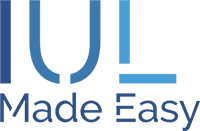Comparing and Contrasting IUL vs Roth IRA
The key to choosing the right vehicle lies in understanding how each works and what each can offer you depending on your goals for retirement income, estate planning, and tax efficiency.
An IUL is a type of permanent life insurance that offers the opportunity for cash value growth tied to the performance of a market index, while still maintaining a 0% floor to protect against market downturns. A Roth IRA is a retirement account that grows tax-free and allows you to access qualified tax-free distributions after age 59½.
While both can deliver future tax advantages, the paths they take and the rules they operate under are entirely different.
Understanding the Tax Differences
With a ROTH IRA, your contributions are made with after-tax dollars, and as long as you follow IRS rules, your qualified distributions will be tax-free. However, your contributions are limited by annual caps and income thresholds.
For 2025, the maximum you can contribute to a Roth IRA is $7,000 if you’re under age 50 and $8,000 if you’re 50 or older. For married couples filing jointly, the ability to contribute begins to phase out when your modified adjusted gross income (MAGI) reaches $236,000, and is completely phased out at $246,000. For single filers or heads of household, the phase-out range is $150,000 to $165,000.
By contrast, an IUL does not have contribution limits or income thresholds (you do need to be mindful, however, of staying under the IRS guidelines to avoid funding your policy too quickly, which would create a MEC, or Modified Endowment Contract).

Access and Flexibility
One of the major distinctions in the IUL vs Roth IRA conversation is how and when you can access your funds. With a Roth IRA, you generally need to wait until age 59½ to access your earnings income-tax-free. Early withdrawals can trigger penalties and taxes unless you meet certain exceptions.
On the other hand, an IUL offers the opportunity to access your policy’s cash value through loans at any time, without age restrictions or penalties. These loans are tax-free as long as the policy remains in force, and you aren’t required to repay them. Instead, the loan amount is deducted from the cash value/death benefit later on. This flexibility makes IULs attractive for entrepreneurs, real estate investors, and anyone needing liquidity before traditional retirement age.

Risk and Growth Potential
A Roth IRA typically relies on mutual funds, ETFs, or individual stocks for growth. That means you’re subject to market downturns. If the market drops, so can your account value. There are no floors or caps in most traditional Roth IRAs; you take on all the risk, and you can also reap all the rewards.
With an IUL, your cash value is tied to an index such as the S&P 500, but your money isn’t directly invested in the market. This allows for protection during down years, thanks to the 0% floor. There is, however, typically a cap on the amount of credited interest you can earn in strong market years. While this limits upside, it ensures you won’t lose due to market downturns, though you can still lose value from policy fees. The tradeoff is a more stable, predictable growth path, especially when you’re focused on long-term tax-free access rather than high-risk, high-reward returns.
Estate and Legacy Planning
A Roth IRA offers some benefits when it comes to estate planning, but inherited IRAs are now subject to a 10-year distribution rule, meaning your beneficiaries have to withdraw all funds within 10 years of your passing. This can trigger unexpected tax liabilities depending on their income bracket.
An IUL provides an income-tax-free death benefit that passes directly to your beneficiaries and avoids probate. This makes it a highly strategic tool for wealth transfer and estate planning. Even better, the cash value you accumulate can be used as collateral for policy loans during your lifetime while still preserving a benefit for your heirs, a dual benefit few financial strategies can match.
Contribution Limitations and Suitability
If you’re under the income thresholds and want a simple, self-directed way to save for retirement, a Roth IRA is a solid option. But if you’re a high-income professional, business owner, or someone who has already maxed out other retirement accounts, an IUL may offer a more robust, long-term solution. Because there are no contribution limits or income restrictions, you’re able to fund your policy according to your unique strategy, especially if you’re aiming to create a max-funded IUL account.
IUL vs Roth IRA: Which is Right For You?
Ultimately, the IUL vs Roth IRA debate isn’t a matter of which option is better universally; it’s about what works better for you. If you want to supplement your retirement strategy with access to tax-free loans, estate benefits, and greater contribution flexibility, an IUL may be worth exploring. And of course, you can always use both types of vehicles to pursue your financial goals.
Just remember: IULs aren’t investment vehicles. They’re insurance products that offer financial benefits, especially when structured correctly with the help of a knowledgeable professional.

